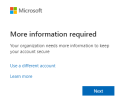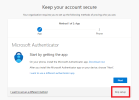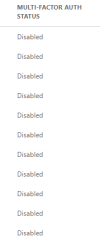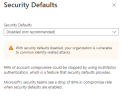thecomputerguy
Well-Known Member
- Reaction score
- 1,453
I have a client that I am migrating from Gsuite to O365 using the Google API (Not IMAP) migrating with MigrationWiz. The first thing I do when I get ahold of a new tenant is make myself an unlicensed Global Admin account.
As of creating my global admin account I am being prompted to enable MFA (which is normal) EXCEPT that security defaults, and per user MFA are both disabled. I am able to skip this and proceed, but I am constantly prompted when moving through the admin center.
MigrationWiz requires that the account being used for migration purposes NOT have any sort of MFA enabled, and security defaults need to be disabled temporarily while the migration takes place per: https://help.bittitan.com/hc/en-us/...Microsoft-365-Migration-Guide#limitations-0-1
After hitting my head against the wall over and over due to MigrationWiz being unable to verify credentials I discovered that the tenant owner was also a Global admin. Upon logging into his account I discovered that even though he is also a Global Admin MFA is not required for his account, and his account is not prompted like mine is.
I was eventually able to get MigrationWiz credentials to verify but I had to use his account (not a big deal). Mine would time out and say that the destination server failed to respond probably because when MigrationWiz was trying to verify the credentials, it got stuck because MFA is required for my account.
It looks like I am on the road to success with this migration but I'm trying to figure out why my newly created Global admin account is requiring MFA when it shouldn't?




As of creating my global admin account I am being prompted to enable MFA (which is normal) EXCEPT that security defaults, and per user MFA are both disabled. I am able to skip this and proceed, but I am constantly prompted when moving through the admin center.
MigrationWiz requires that the account being used for migration purposes NOT have any sort of MFA enabled, and security defaults need to be disabled temporarily while the migration takes place per: https://help.bittitan.com/hc/en-us/...Microsoft-365-Migration-Guide#limitations-0-1
After hitting my head against the wall over and over due to MigrationWiz being unable to verify credentials I discovered that the tenant owner was also a Global admin. Upon logging into his account I discovered that even though he is also a Global Admin MFA is not required for his account, and his account is not prompted like mine is.
I was eventually able to get MigrationWiz credentials to verify but I had to use his account (not a big deal). Mine would time out and say that the destination server failed to respond probably because when MigrationWiz was trying to verify the credentials, it got stuck because MFA is required for my account.
It looks like I am on the road to success with this migration but I'm trying to figure out why my newly created Global admin account is requiring MFA when it shouldn't?




